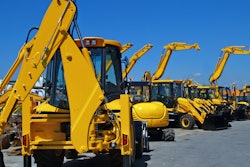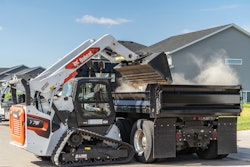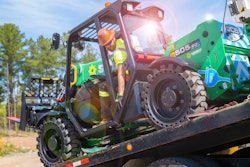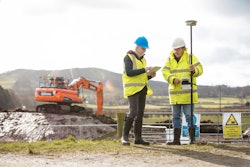
Commercial construction experienced continued growth in Q2 of 2022 despite mounting economic uncertainty, according to a new quarterly report from Dodge Construction Network
In the report, Richard Branch, chief economist at Dodge Construction Network, reflects on the industry's growth, broader economic trends impacting the construction economy across Q2 2022 and how the sector is weathering those challenges.
For improved growth within the industry, Branch says, there are two major trends that must continue: decreased pandemic impact and successful inflation reduction.
Pandemic woes
Generally, nonresidential construction has benefited from the increased confidence that the worst of the pandemic (near to being labeled as an endemic) is in the rearview mirror. “For projections connected to the pandemic to continue, each new wave of the Covid-19 variant will need to impact the economy less and less,” Branch says.
Since February 2020, project timelines have been extended longer than usual, even just from conception to groundbreaking. Branch suggests that digital transformation within a contractor’s business is key to advancing efficiency and productivity.
“Design procedures, digitization of plans and even robotics are enabling construction workers to get more done in less time and allowing them to spend more time doing more complex tasks in the construction space. Solutions that make job sites more productive serve to mitigate some of the challenges connected to the workforce shortage,” said Branch.
There is no doubt, the pandemic intensified the issue of contractors’ ability to find skilled workers. Unfilled positions in construction are approaching an all-time high of nearly 400,000, according to the U.S. Bureau of Labor Statistics. As of the end of July, this is nearly double the number of positions in the market at the start of the pandemic in February 2020.
“We expect that the shortage of skilled labor will slow the progress of projects through the design and bidding stages, resulting in moderate growth in starts activity,” Branch says. “This is the perfect storm. We have not recently had a situation like this, where we have significant logistics and supply issues caused by the pandemic combined with the shortage of employees in logistics and trucking. It’s unprecedented.”
However, Branch notes in his report that the workforce issue in the construction industry is a systemic problem.
“It’s a clear and present danger as the industry moves forward,” he says. “The industry must reach younger workers where they are (high schools, tech schools and universities) with opportunities that present a path to a career, not just a job.”
It remains to be seen if the available jobs opening up due to the infrastructure bill funding will benefit or potentially expand the worker shortage.
Inflation mitigation
“What’s worse than high inflation and low unemployment is high inflation and a recession with millions of people out of work,” Branch states. “Inflation and rising costs are a huge concern for the construction industry, right up there with our workforce shortage.”
The Federal Reserve indicated consumer price inflation rose from 5.8% in December of 2021 to 6.3% in April — the highest increase since the early 1980s. Inflation was at an all-time high of 9.1% at the time the report was released in late July.
Branch notes that inflation is dangerously high, and the Federal Reserve has taken an aggressive approach in combating it with interest rate hikes. It remains in the federal government’s hands to engineer that soft landing.
“While these remedy some aspects of the issue, it can slow the economy down,” Branch says. “The federal government is tasked with striking a delicate balance here.”
Fortunately, as other economists have stated recently, Branch agrees that it appears some of the prices have peaked.
“With that, as we view projects waiting in the pipeline to break ground, it gives us hope that those projects can commence in late 2022 or 2023,” he says.











